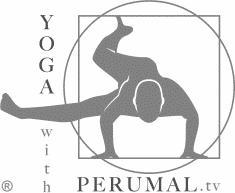GOLDEN RULES
GOLDEN YOGA RULES
Sri Tirumalai Krishnamacharya the father of modern yoga says, "Teach what is appropriate for an individual". Likewise a yoga student must learn to practice what is appropriate. Learning the appropriate practice is understood through a careful study of yoga science along with a direct experience of practicing over long periods. Comprehending what postures to practice for various conditions of concern from back pains to high blood pressure are just some of many challenges faced by practitioners. Prior to acquiring yogic knowledge a committed beginner will inevitably tap into the 10 elements an advanced practitioner knows to be mindful of.
Understanding the following 10 elements of a yoga practice will connect aspirants to the intuitive hidden aspects of yoga. Practitioners ought to identify the underlying reasons
for practicing yoga, learn how to draw the attention inwards, create regularity
in practice, undertake joint preparation, understand the core
as well as the steps to building strength,
how to avoid pain, learn the stages of healing, 2 reflexes
governing asana and diet basics. This leads to a deeper experience of yoga and most importantly injuries are reduced allowing the practice to remain pleasurable.

Slide title
Write your caption hereButton
1. UNDERLYING REASONS
CLICK HERE FOR MORE INFO
For our first in a 10 part series on the elements of the practice a committed novice or proficient practitioner needs to identify the underlying reasons for practicing. If new to yoga, then start by asking why the yoga practice is being pursued? Searching for a good looking body? Did a doctor suggest yoga for a specific problem? Or is there a need to acquire a more spirituality and balance in a world that feels fast and cutting?
2. DRAW ATTENTION INWARDS
In this, the second of a 10-part series on the Golden Rules of the practice, the value and meaning of drawing attention inwards will be scrutinized. Directing attention inwards is an act of letting go of matters that occupy the mind. From this point onward the ability to concentrate is achieved leading to meditation. This is attempted not just when meditating but also during yoga postures. Maintaining such a state during yoga sessions leads to deeper practices. Beginners see the logic, yet the process of application is complicated. The postures are new. Grasping yoga for the first time is like a child learning to walk. Concentration on every step is paramount. It is not long till the steps taken are void of effort and thought. Ideally a mind this is not occupied by thought and emotion is kept open to the world.

Slide title
Write your caption hereButton

Slide title
Write your caption hereButton
3. REGULARITY IN PRACTICE
The third element from the 10 elements of the practice is heard frequently: always practice at the same time and place every day. Regularity within all aspects of our lives from sleep, diet and work is a pillar of stability leading to inner peace. Our biggest stresses are simply a lack of regularity.
4. JOINT PREPARATION
In the 4th of the 10-part series on the elements of yoga practice, we talk about the preparation of the joints. A joint is any part of the body in which two or more bones make contact. They are quite sensitive and one must take care of them properly to avoid injuries.

Slide title
Write your caption hereButton

Slide title
Write your caption hereButton
5. UNDERSTAND OUR CORE
The past decade has seen an incredible amount of focus placed on core development throughout fitness and wellness. But what exactly is the core? The core muscles are the muscles found in the trunk of the body. Take away the limbs along with the head and what is left over is the core. The major muscles of the core are in the abdominal and mid to lower back. They act as the foundation for all leg and arm postures right up to head standing.
6. BUILDING STRENGTH
CLICK HERE FOR MORE INFO
Whether you are training the core or the limbs you may consider building strength to be executed progressively especially as a beginner.
To begin look at the classic strength posture of plank. If we remain 15 to 30 seconds in plank without moving, this would be a holding posture also known as an isometric exercise. The opposite of this is transitional movements such as moving from plank to chaturanga then stopping and returning to plank. Transitional movements going in the direction of gravity (eccentric lengthening) and then against it (concentric shortening) are known as isotonic exercises.

Slide title
Write your caption hereButton

Slide title
Write your caption hereButton
7. AVOID PAIN
CLICK HERE FOR MORE INFO
Avoiding contact with pain is fundamental to growing in yoga. It is not fun or productive to be repeatedly injured from the practice. Nor is it motivating to continually practice with an injury. Most long term practitioners have experienced that ball and chain at some point. If you are carrying a ball and chain of injuries from yoga then ask yourself honestly. Do you ignore pain signals during your yoga practice?
8. STAGES OF HEALING
Once we are in contact with pain what should we do? How should we approach our yoga practice? When an injury occurs in yoga it means that a mistake has been made either by the student, teacher or both. At this point the first thing to know is how the injury occurred. Rethink the sequence or individual postures. From here it can be derived as what should be or should not be done in the future

Slide title
Write your caption hereButton

Slide title
Write your caption hereButton
9. TWO REFLEXES
Reflexes are not defined as having lightning fast reaction times. For example the ability to react fast enough to catch a glass just before it crashes to the floor. This is often interpreted as “good reflexes”. Reflexes are actually unconscious motor responses to sensory stimuli.
Reflexes are not defined as having lightning fast reaction times. For example the ability to react fast enough to catch a glass just before it crashes to the floor. This is often interpreted as “good reflexes”. Reflexes are actually unconscious motor responses to sensory stimuli.
10. DIET BASICS
Diet basics hinges on the idea that the digestive system needs to never slow or stop. As long as the digestive system moves at a pace nature intended then the possibilities of arthritis, low energy, slow mental functions and tight postures will be dramatically reduced.

Slide title
Write your caption hereButton
YOGA RETREATS
YOGA RETREATS
Follow us
© 2023 Perumal Koshy | All Rights Reserved
© 2024 Perumal Koshy | All Rights Reserved













